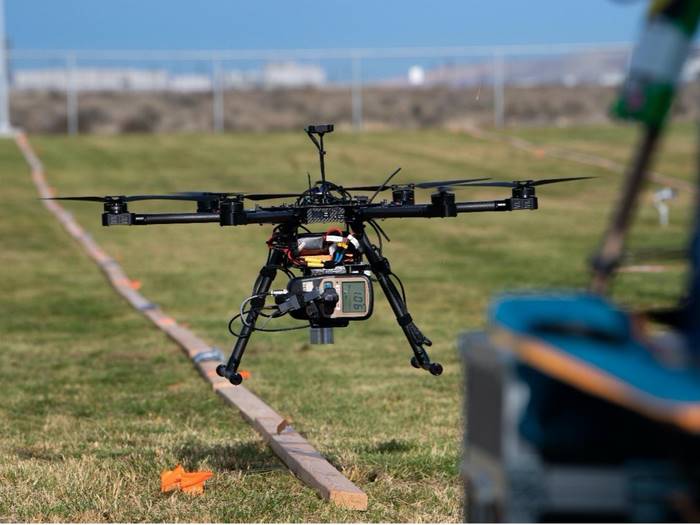By Allan Brettman
Unoccupied aerial vehicles, better known as drones, have rapidly advanced from a quirky, high-flying novelty to a versatile workhorse.
They are tools for search and rescue, traffic monitoring, weather monitoring, and perhaps even package hauling.
One day, they may work with humans to augment the task of conducting surveys to detect low levels of radiation—information that could contribute to the decommissioning of sites no longer needed for nuclear-related energy production or research.
Pacific Northwest National Laboratory (PNNL) researchers found that drones have potential to conduct decommissioning radiological surveys, but further research is needed before the devices are approved for decommissioning purposes. The PNNL researchers detailed their findings for the U.S. Nuclear Regulatory Commission (NRC) in the recently released proof-of-concept report, “Drones for Decommissioning.”
“Drones would be particularly useful in areas that are unsafe for humans to access due to things like terrain that’s difficult to walk on,” said Amoret Bunn, an environmental engineer at PNNL and a study author. “Drones could also survey vertical surfaces that humans can’t get to like the outside of a tall building.”
Decommissioning surveys are conducted at former nuclear power plants and at former buildings or sites where radiological materials were present to demonstrate that a site is in compliance with regulations and can be released for alternative uses.
In the study to assess drones for radiological detection, researchers conducted an experiment at an open field on the PNNL campus in Richland, Washington. The experiment compared the ability of a flying drone carrying radiological survey equipment with the same survey equipment secured to a rolling cart. The cart was chosen because it could best mimic human-collected data to compare with the flying drone.
Both the drone and the human-propelled device performed about 1–3 feet above the surface. Altitude proved to be a significant factor in the flying drone’s ability to collect the radiological data.
External factors such as wind and weather changes also need to be considered, said PNNL physicist Harish Reddy Gadey.
“At most decommissioning sites, we are looking at very low levels of radiation,” said Gadey, a study author who played a key role in crafting the experiment while he was still a postdoc. “We need to be as close to the ground as possible, going as slow as possible to detect some of these very low levels of radiation. For a drone, flying low and slow is not typical.”
Eurekalert






